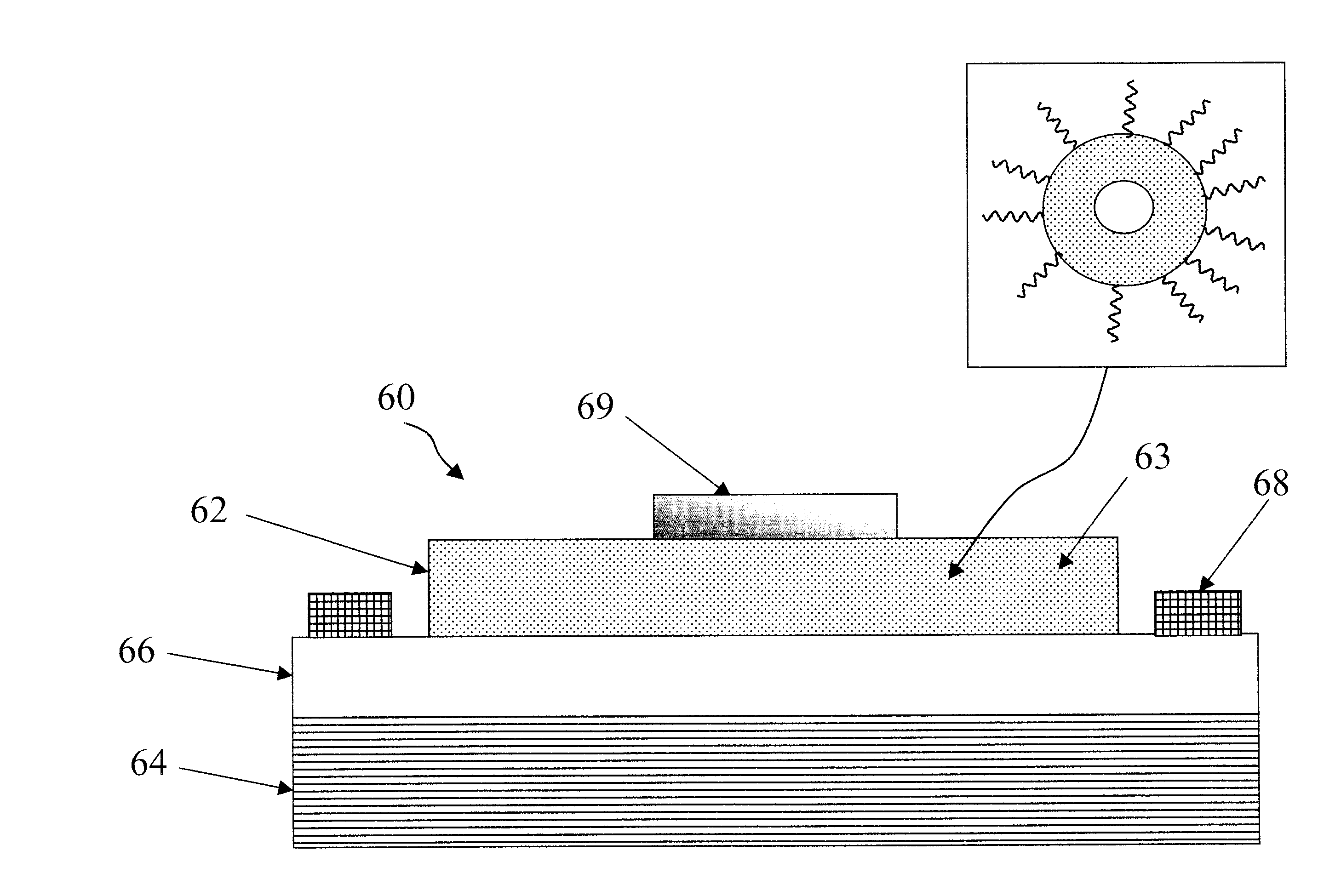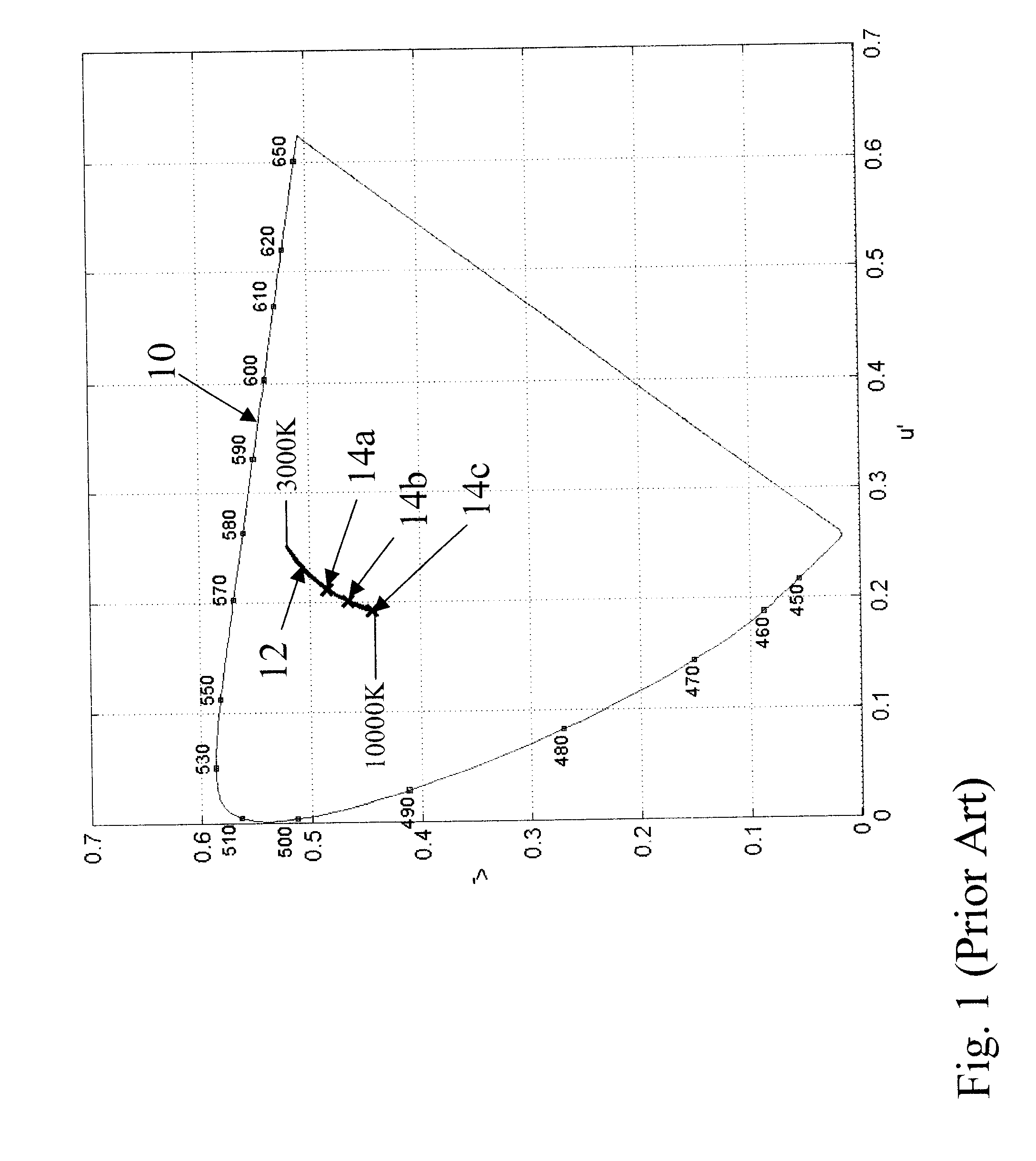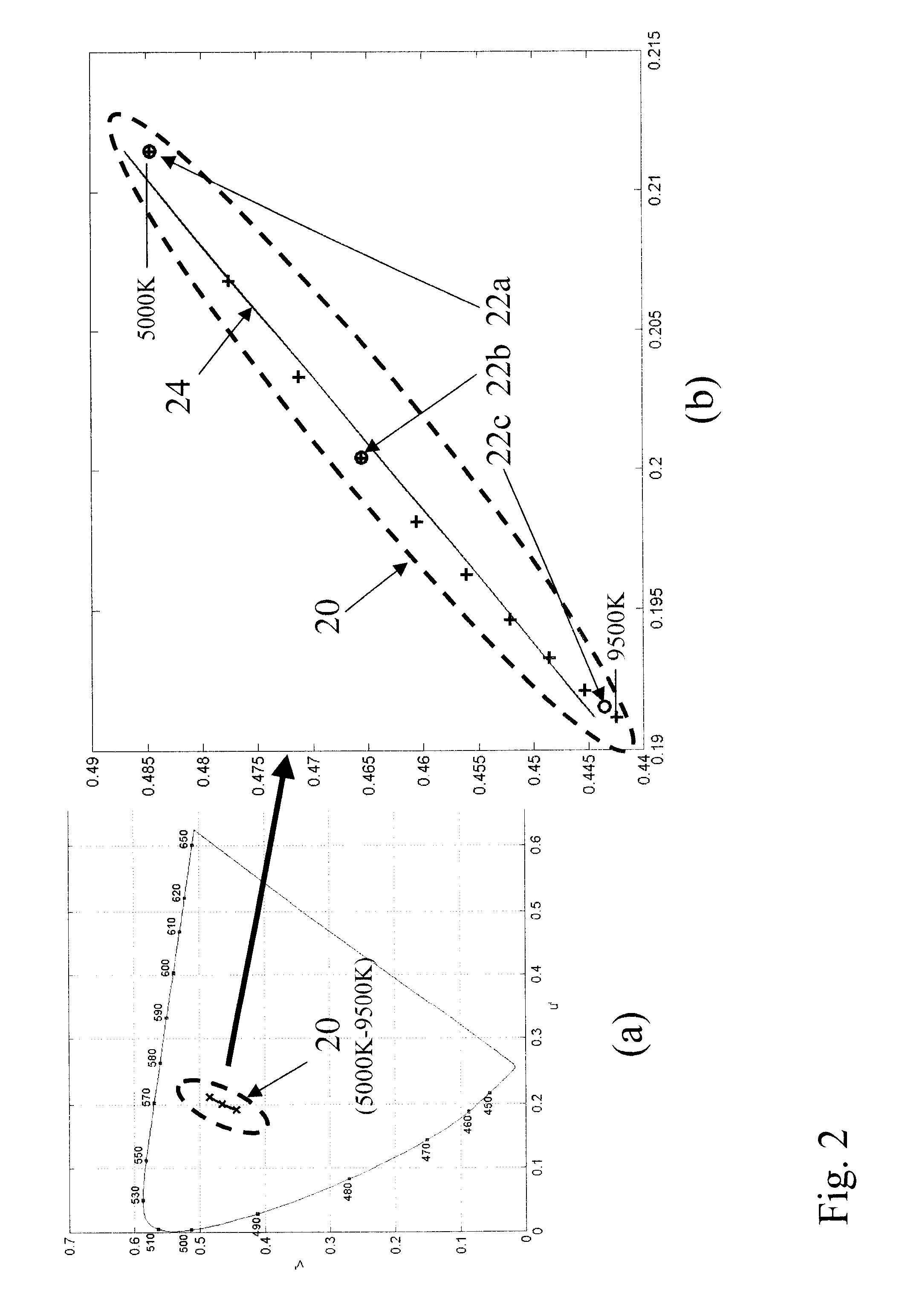White-light electro-luminescent device with improved efficiency
a technology of electroluminescent devices and white light, applied in the manufacture of electrode systems, electric discharge tubes/lamps, discharge tubes luminescnet screens, etc., can solve the problems of discontinuous change in color temperature, high energy efficiency of light sources, and luminance shi
- Summary
- Abstract
- Description
- Claims
- Application Information
AI Technical Summary
Benefits of technology
Problems solved by technology
Method used
Image
Examples
Embodiment Construction
[0031]FIG. 2a shows a 1976 CIE uniform chromaticity scale diagram in which a group 20 of possible device white points is shown, all of which lie along the Planckian locus. In FIG. 2a, a range of blackbody radiator temperatures from 5000 K to 9500 K is shown (solid line) along with the three reference white points D50 22a, D65 22b and D93 22c mentioned earlier. This range of color temperatures is frequently used to set the white reference point of display or lighting devices. FIG. 2a shows the group 20 of possible device white points on the same scale as in FIG. 1. In accord with the present invention, FIG. 2b shows this family in more detail. It is observed that the group 20, whose individual data points are indicated in FIG. 2b by plus signs, are well fit by a straight line 24 over this region of the Planckian locus. To illustrate the present invention, FIG. 3 shows the linear fit 30 of the Planckian locus plotted on a 1976 CIE uniform chromaticity scale diagram, with the endpoints...
PUM
 Login to View More
Login to View More Abstract
Description
Claims
Application Information
 Login to View More
Login to View More - R&D
- Intellectual Property
- Life Sciences
- Materials
- Tech Scout
- Unparalleled Data Quality
- Higher Quality Content
- 60% Fewer Hallucinations
Browse by: Latest US Patents, China's latest patents, Technical Efficacy Thesaurus, Application Domain, Technology Topic, Popular Technical Reports.
© 2025 PatSnap. All rights reserved.Legal|Privacy policy|Modern Slavery Act Transparency Statement|Sitemap|About US| Contact US: help@patsnap.com



